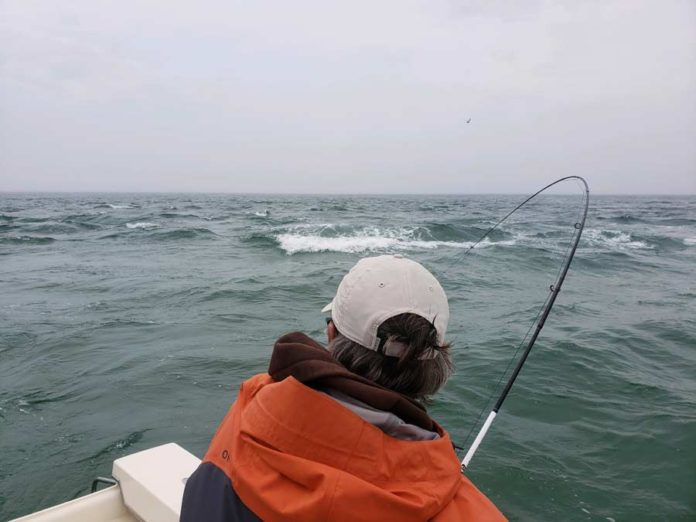Written by: Tom Rosenbauer
Hands-down the most popular saltwater or big-game rod in the Orvis line-up is a 9-foot, 8-weight. But I honestly think many anglers are under-gunning themselves. I’ve just returned from an intensive series of filming sessions for next year’s “Orvis Guide to Fly Fishing” TV show, where we chased smallmouth bass, bonefish, permit, small tarpon, and striped bass. Most days, I used a 9-foot 9-weight Helios 3D rod, and I have just fallen in love with that model. It gives me the extra distance I need, more power against hostile winds, and an easier time throwing flies that weigh almost as much as an ultralight jig.
Take smallmouth bass, for example. They are hard fighters, true, but it’s mostly restricted to aerial displays and close-range tug-of-wars. You could fight these guys easily on a 5-weight. But 95 percent of the time, you aren’t fighting fish, you’re trying to get your fly into a place where a bass will eat it. It’s no fun if you can’t deliver the fly to a great-looking spot. The most effective smallmouth flies for me have always been either wind-resistant poppers of flies with dense, heavily-weighted eyes like crayfish and Clouser Minnows. Getting those flies 40 or 50 feet away into the wind is easier with a 9-weight than it is with an 8-weight.

But isn’t a 9-weight too heavy to enjoy the fight of a smallmouth bass? I don’t think so—with the progressive action of the H3 rods, even a 14-inch smallmouth will bend the rod at least to the middle when you put pressure on them. That gives you plenty of fun and tactile feedback, while offering the reserve power you need to shove bigger flies into the wind.
I really appreciated the 9-weight on striped bass in Rhode Island and on Cape Cod this year. Beside a week filming there, I also spent my vacation on Cape Cod, and I had a spot I could walk to early in the morning where I could fish for larger “schoolies,” up to about 28 inches long. They were holding in a relatively strong current, and at high tide they were almost at my feet. But when the tide dropped, the fish moved out, and I had to make 60- and 70-foot casts, sometimes into the wind, to reach them. I could do it easily with the 9-weight, but one morning, since the fish were not huge, I took the 8-weight. Yeah, the rod was marginally lighter and bent a bit more when playing the fish, but I had to push my casts beyond what felt like fun, and sometimes they didn’t quite reach the mark. As a result, my arm was more tired after five hours of fishing that if I had used the 9-weight.

Granted, the H3 rods are super accurate and develop the high
line speed that helps you make longer casts. They put the fly exactly where you
want it—except if the mass of the fly line is just not enough to drive a heavy
fly into a stiff wind. Then, no matter how accurate your rod, it won’t push the
fly and leader to the end of your cast. You need that extra mass.
One day, I was lucky enough to be invited on a trip offshore to some rips where we fished for bigger stripers. Here, the 9-weight threw the big squid patterns and Gurglers as well as my casting ability allowed, and I could put them right where I wanted them. The extra reserve power in the 9-weight let me play the fish quicker, especially when a bigger fish used the rip currents to turbocharge their already strong runs. I don’t know about you, but when the fishing is hot the last thing I want to do is play a fish—I want to get my fly back in there for the next strike.

Credit: Source link































